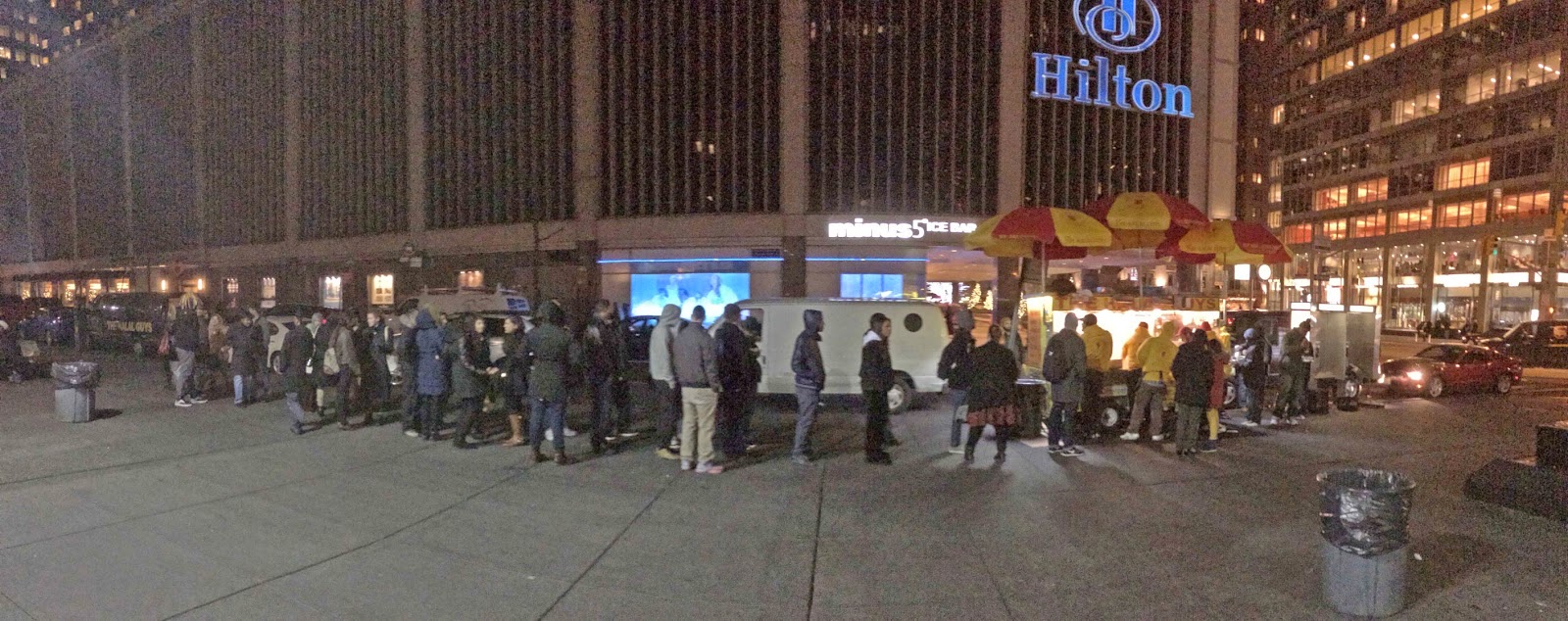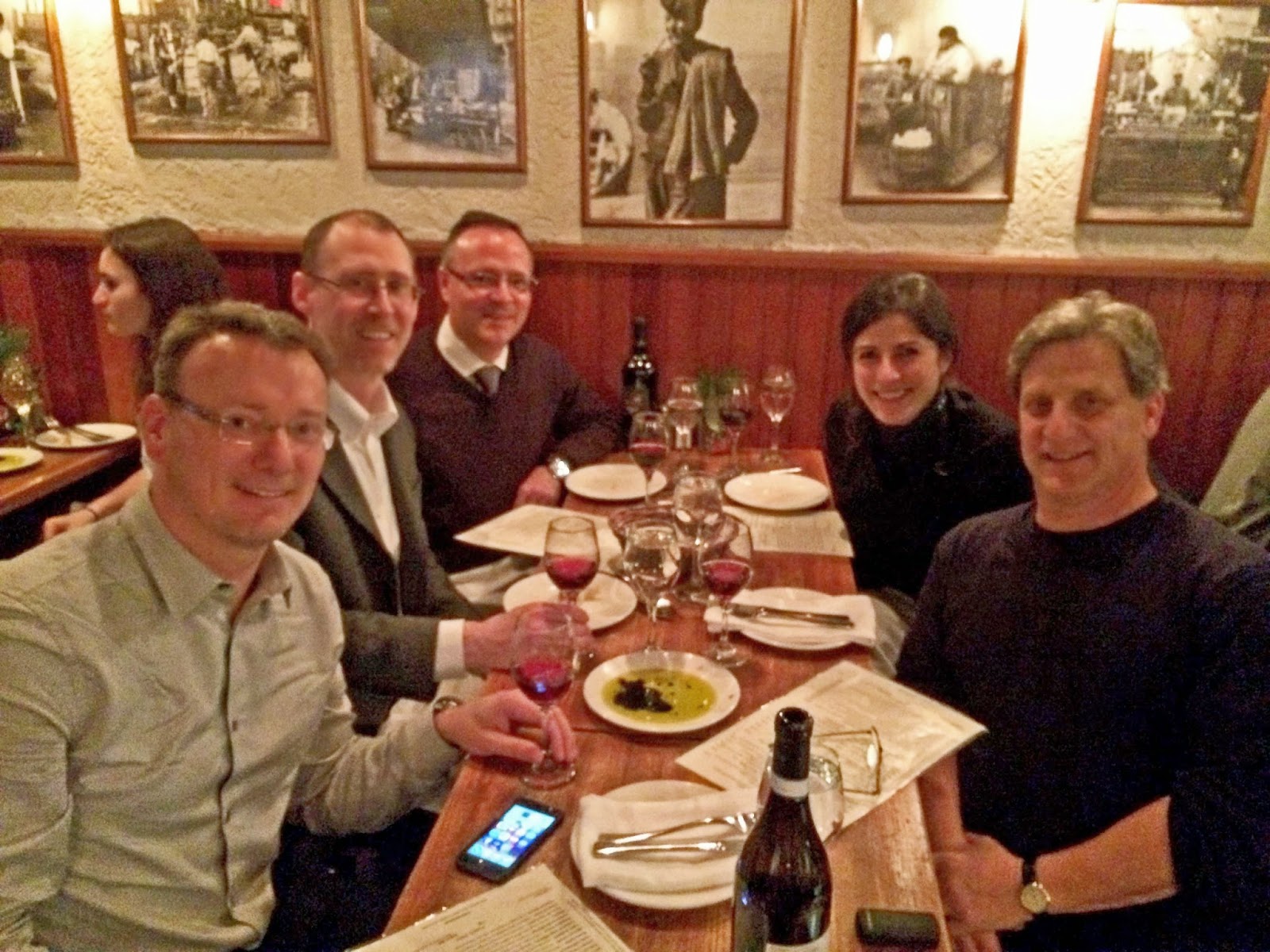 |
| SAR member Nicole Hindman presents me with a plaque at the NYU Head to Toe course that honors Dr. Mort Bosniak (right). |
After my brief stay in Boston, I
boarded a train to Manhattan. I was lucky that the AV guy for Koenraad’s course
was familiar with the trip and could give me some helpful advice. First of all,
if you ever make this trip, take the Acela (express) train from the South
Station. It makes the trip in little over 3 hours with very few stops, and the
seats are the equivalent of first class on most domestic US flights (without
those little hot moist towels that I never quite know what to do with). By
boarding at South Station, you will have your pick of seats. The train has a “quiet
car” (no loud conversations or cell phones) and a nice snack car. If you want
to enjoy some coastal scenery, sit on the left side of the train (facing the
direction of travel), although the sun can be an issue on this side early in
the day.
| The Acela from Boston to New York |
The NYU head-to-toe course was the
first CME course I ever attended (back in 1988), and it is a fantastic course
for general radiologists interested in a comprehensive multimodality,
multispecialty imaging review. Now, over 20 years later, I was returning as the
Bosniak lecturer, an honor made even more special by having Dr. Bosniak in
attendance. Mort is an amazing guy, as sharp and accomplished as anyone you’ll
ever meet. Of course, this could be said about any of the NYU abdominal imaging
faculty, but few radiologists in the world can claim such a sustained impact on
the field of medicine as Dr. Bosniak.
I always thought it would be cool
to have a classification system named after me, but all the good diseases and
organs were already taken by the time I started my career. The spleen was still
up for grabs, but the best I could come up with for a classification of splenic
lesions was L1 = cyst and L2= something else. My favorite classification
schemes are the ones that have as many categories as there are reported cases (how
do these get published?). Now, I am just content to classify nonmedical things,
like Dallas drivers (L1 = crazy idiots and L2 = me). Why Dallas? See my next
blog post!
Many people who don’t live in New
York think of New Yorkers as loud and pushy. That’s probably because many of
the people who do live in New York are loud and pushy. But it’s nothing
personal. New York City is a loud and crowded place. Even the New Zealand rugby
team couldn’t cross Times Square during the holiday season in less than 30
minutes. Even so, the people of New York have no problem waiting patiently for
a good falafel.
 |
| No, this isn't the cab line at RSNA. These people are waiting for falafels. |
The NYU group of abdominal imagers
doesn’t have to be loud or pushy. Their contributions to our field speak for themselves.
I was truly privileged to have spent an evening with such a talented group of
imagers. It’s no secret that NYU consistently churns out some of the most
influential leaders in abdominal imaging year after year. I asked former SAR
president Alec Megibow how they do it. I think he said the secret is “good
falafels”, but the restaurant was a little noisy, and I might not have heard
him correctly. SAR members Alec, Nicole Hindman, Hersh Chandarana, Andrew
Rosenkrantz, and Gen Bennett all gave outstanding talks during the abdominal
part of the conference.
| Dr. Bosniak tries to give me a big hug. Hersh (left) holds him back |
Nicole Hindman and I had a nice
discussion about unknown film panels over lunch. Be sure to cheer for her at
this year’s SAR unknown film panel in Coronado. And here’s some more advice for
her in case she needs it:
1) If you don’t know what something
is, tell a joke.
2) If you don’t know what
something is and can’t remember any jokes, pretend you are choking.
3) When the other team gets a case
right, make a face like, “duh, the janitor* could get that one”.
4) When the other team gets a case
wrong, make a face like, “have you thought of becoming a janitor*?”
5) If the janitor* looks like
he/she might get the case before you do, quickly spill something.
6) When the panel is over,
regardless of how you think you performed, immediately erase it from your
memory. That’s what everyone one else in the room will be doing.
All in all, it was a great visit
at a great time of year. No one decks the halls better than NYC! The only
downer was the drive to the airport when it was time to go home (the automobile
part of my journey). It should have been a 10 minute drive, but I think the
driver was going too fast, as all the clocks at the airport showed that an hour
and a half had elapsed at LaGuardia (Stephen Hawking would laugh at that one
even if you didn’t). It didn’t matter, though,
because the flight was delayed while the flight crew battled their way to the
airport through the impenetrable grid lock of New York’s rush (ha!) hour.
 |
| No one does the holidays like NYC! |
 |
| One of many imaginative holiday displays |
 |
| A winter wonderland |
*In reality, janitors are
hardworking and intelligent members of a noble profession who are often
unfairly and inaccurately depicted in jokes as ignorant, lazy, or unambitious
by comedians who lack the inspiration and/or talent to create new/novel
material. To see what janitors are really made of, read about the story of nursing home janitor Miguel Alvarez.

